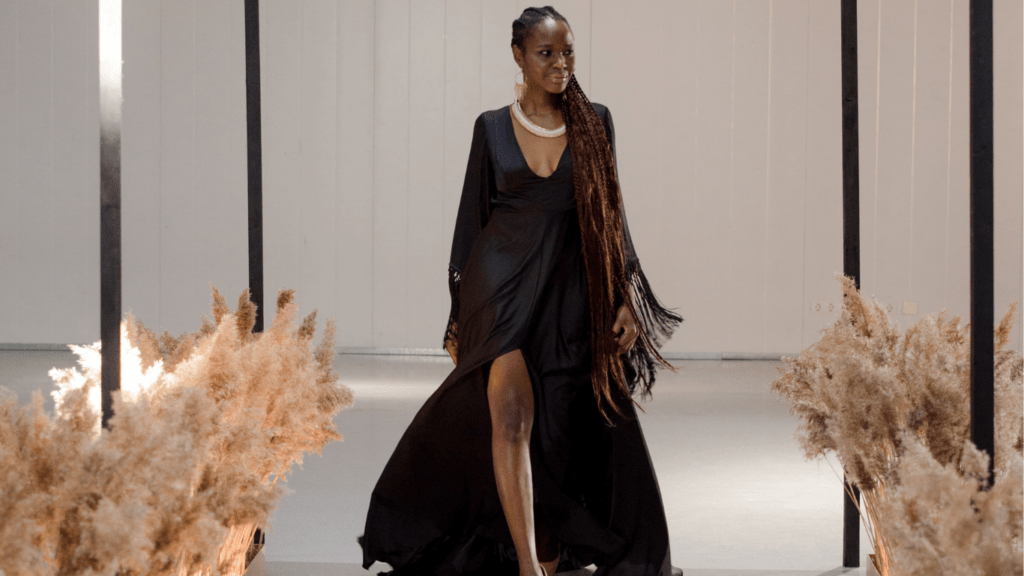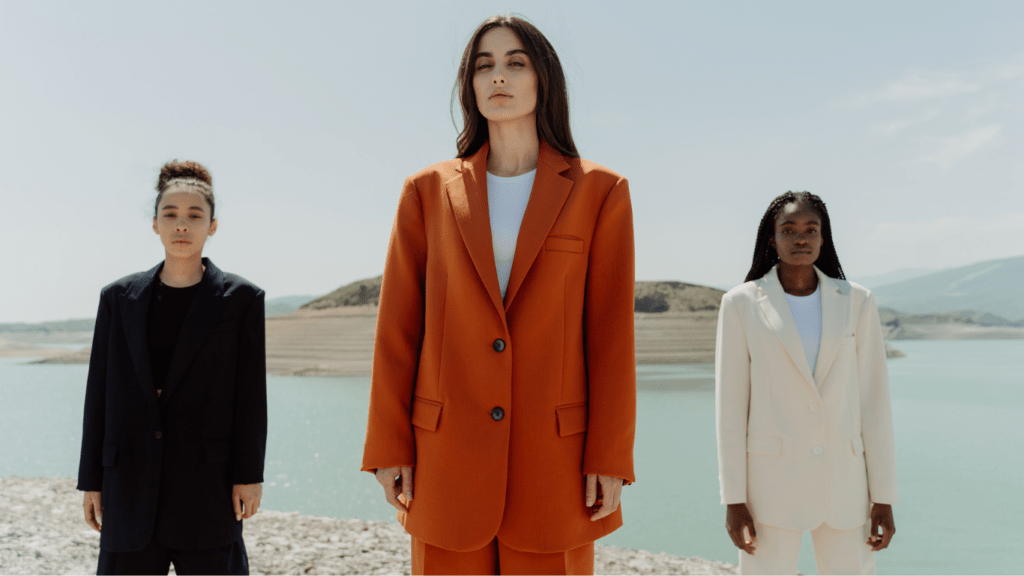The Evolution Of Red Carpet Fashion
Red carpet fashion has transformed significantly over the decades. It began as a formal affair, with actresses in classic gowns that embodied elegance and sophistication. In the 1950s, icons like Audrey Hepburn and Grace Kelly set the standard with their timeless styles. Hepburn’s Givenchy dress at the 1954 Oscars epitomized classic Hollywood glamour.
As the decades progressed, red carpet fashion became more daring and expressive. The 1970s saw a shift with bolder colors and extravagant designs. Cher’s 1973 Emmy Awards outfit, with its feathered headdress and sparkling ensemble, captured the spirit of the era. This period marked the beginning of celebrities experimenting with avant-garde looks.
The 1990s introduced another wave of change. The focus shifted towards individuality and personal statements. Celebrities like Princess Diana and Madonna pushed fashion boundaries with sleek, modern designs. Princess Diana’s 1996 Met Gala dress by Dior showcased minimalistic, yet striking, fashion.
The 2000s and 2010s brought an era of high fashion collaborations. Designers like Alexander McQueen and Thom Browne crafted custom pieces, turning the red carpet into a runway. Lady Gaga’s 2010 MTV VMA meat dress, designed by Franc Fernandez, exemplified this trend, making bold political and social statements through fashion.
Today, red carpet fashion is a diverse blend of classic glamour, innovative couture, and personal storytelling. Celebrities use their outfits to make powerful statements. Billy Porter’s 2019 Oscars tuxedo gown by Christian Siriano broke gender norms and highlighted fashion’s role in social conversations.
Red carpet fashion has shifted from classic and conservative to bold and expressive. Each era brought unique trends, from elegant gowns in the 1950s to today’s dynamic statements. This evolution reflects broader cultural changes and showcases fashion’s enduring influence.
Memorable Iconic Celebrity Looks
Red carpet fashion boasts memorable looks that define moments in style and culture. I’ll highlight two distinct eras’ impacts: Classic Hollywood Glamour and Modern Bold Statements.
Classic Hollywood Glamour

Audrey Hepburn’s Givenchy dress at the 1954 Oscars epitomizes elegance. Its timeless black and white design inspired countless evening gowns. Grace Kelly’s ice-blue gown by Edith Head in 1955 set a standard for sophistication, influencing bridal and formal wear for decades. Marilyn Monroe’s white halter dress in 1955 cemented her status as a style icon.
Elizabeth Taylor dazzled at the 1961 Oscars in her Dior dress, marking a high point of classic glamour. Rita Hayworth’s 1946 Gilda dress became a symbol of star power and poise. The allure of these looks lies in:
- simplicity
- meticulous tailoring
- luxurious fabrics
setting a benchmark in Hollywood fashion.
Modern Bold Statements
- Lady Gaga’s meat dress at the 2010 MTV VMAs shocked audiences but highlighted her daring fashion sense.
- Rihanna’s 2015 Met Gala yellow gown designed by Guo Pei became an internet sensation due to its extravagance and memes.
- Billy Porter broke barriers at the 2019 Oscars with his tuxedo gown by Christian Siriano, challenging gender norms in fashion.
- Beyoncé stunned in a sheer, jeweled Givenchy gown at the 2015 Met Gala, blending sensuality and artistry.
- Zendaya’s Cinderella gown at the 2019 Met Gala, designed by Tommy Hilfiger, merged technology with classic fairy-tale themes, signaling the future of red carpet fashion.
Modern looks often embody bold statements—whether through unorthodox materials, avant-garde designs, or poignant messages.
These iconic moments fuse fashion with cultural significance, driving trends and inspiring future generations.
Fashion Designers Behind The Scenes
Designers don’t just create outfits; they shape moments that define cultural eras. Their creations often steal the spotlight on the red carpet and leave lasting impressions.
Influential Designers
Several designers have etched their names into fashion history by dressing celebrities. Hubert de Givenchy’s partnership with Audrey Hepburn brought timeless elegance to the red carpet. Alexander McQueen’s collaboration with Lady Gaga pushed avant-garde boundaries, most notably seen in her meat dress. Versace, under the leadership of Donatella Versace, has continually created jaw-dropping looks, such as Jennifer Lopez’s green Versace dress that revolutionized red carpet fashion in 2000. These designers create more than clothing; they craft statements that resonate globally.
Innovative Collaborations
Collaborations between designers and celebrities often lead to memorable fashion moments. The synergy between designers and musicians, for example, creates unique and iconic looks. When Rihanna teamed up with Guo Pei for the 2015 Met Gala, the result was a stunning yellow gown with a 16-foot train that instantly went viral. Another example is the partnership between Christian Siriano and Billy Porter, resulting in the groundbreaking tuxedo gown at the Oscars, which challenged traditional gender norms. These partnerships not only highlight the talents of both the designer and the celebrity but also push the boundaries of fashion to new heights.
Impact On Popular Culture
Red carpet fashion significantly shapes popular culture, resonating beyond the events themselves. Celebrity outfits drive conversations and influence public attitudes toward fashion, creating lasting impressions.
Media And Public Perception
Media extensively covers red carpet events, amplifying celebrity fashion choices to a global audience. Publications like Vogue and Vanity Fair provide in-depth analysis, while social media platforms like Instagram and Twitter burst with images and discussions. This coverage not only elevates celebrity status but also transforms their outfits into cultural symbols. When Lady Gaga wore her meat dress at the 2010 MTV Video Music Awards, the media frenzy sparked debates on artistic expression and animal rights, showcasing fashion’s power to provoke and influence societal issues.
Trends Inspired By The Red Carpet
Many everyday fashion trends originate from red carpet moments. Designers often replicate elements from iconic looks in their collections, making high fashion more accessible. For example, Audrey Hepburn’s Givenchy dress from the 1954 Oscars popularized the little black dress, which remains a wardrobe staple today. Similarly, Beyoncé’s 2015 Met Gala gown inspired a surge in sheer and embellished evening wear. Retailers swiftly adapt these styles for mass production, allowing fans to emulate their favorite stars and reinforcing the red carpet’s influence on mainstream fashion.
How Celebrities Choose Their Outfits
Choosing a red carpet outfit involves more than just picking a dress. Celebrities rely on a team of professionals and a strategic balancing act.
The Role Of Stylists
Stylists are key players in crafting red carpet looks. They maintain strong relationships with designers, securing unique and custom pieces for their clients. Stylists also track trends, advising celebrities on what will make headlines and maintain their public image. For example, Rachel Zoe, known for styling Anne Hathaway, blends classic elegance with cutting-edge fashion, creating memorable moments that resonate.
Balancing Personal Style And Expectations
Celebrities must navigate personal preferences and public expectations. They often aim to express individuality while conforming to the event’s dress code. For instance, Zendaya’s 2019 Met Gala look, a nod to Cinderella, balanced her unique style and the event’s “Camp” theme. By combining self-expression with audience anticipation, celebrities make impactful statements that go beyond fashion.




